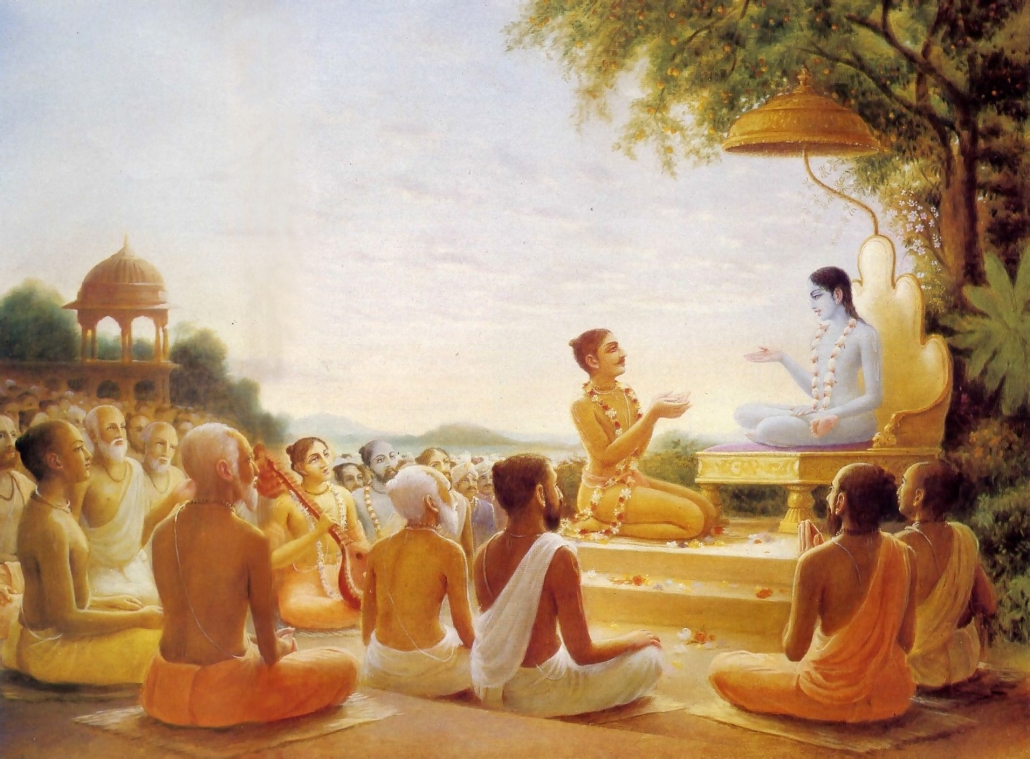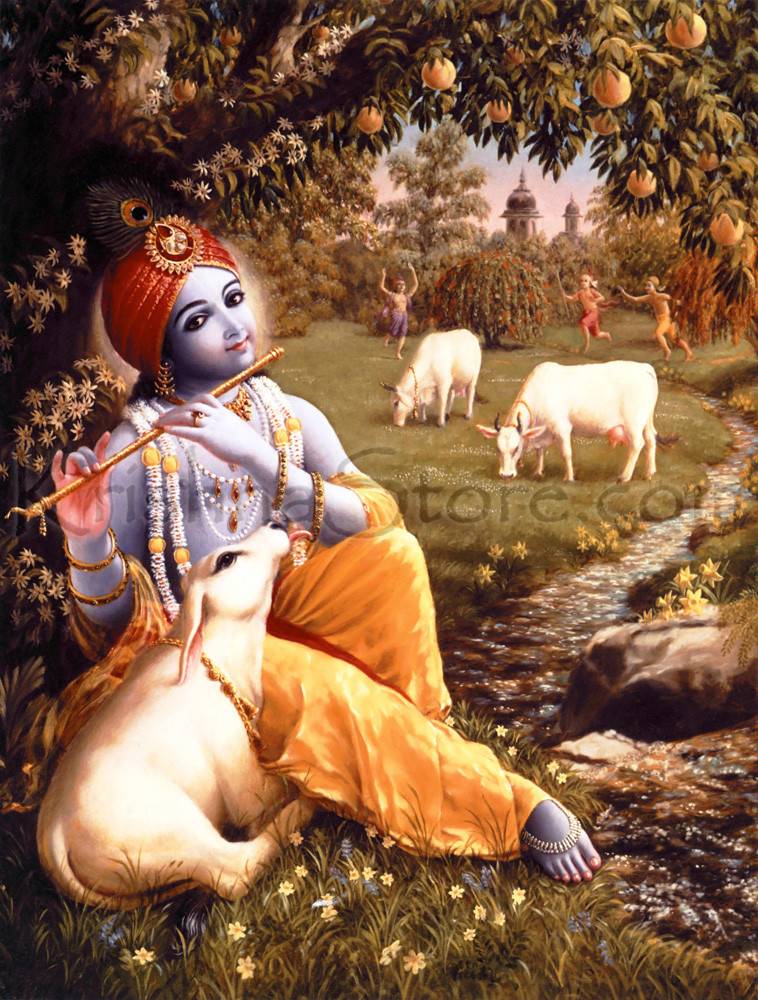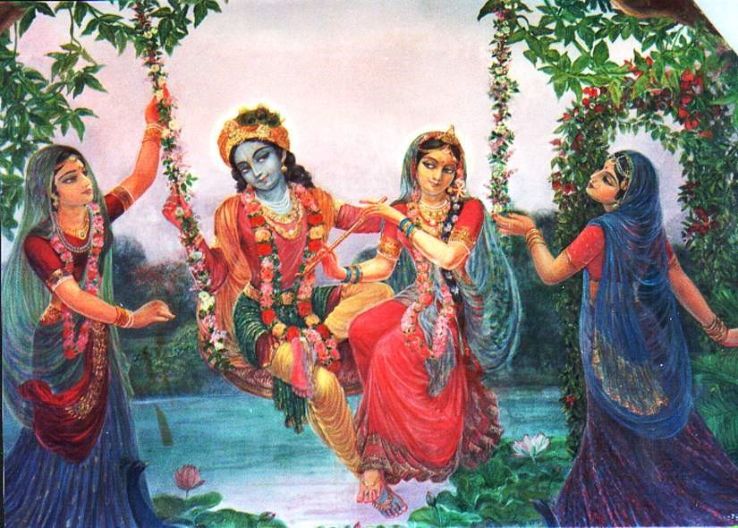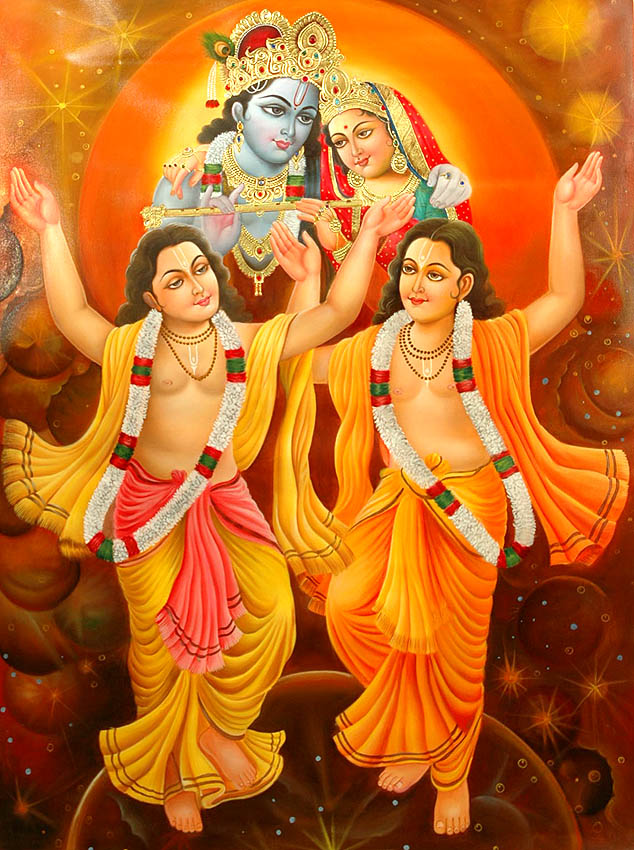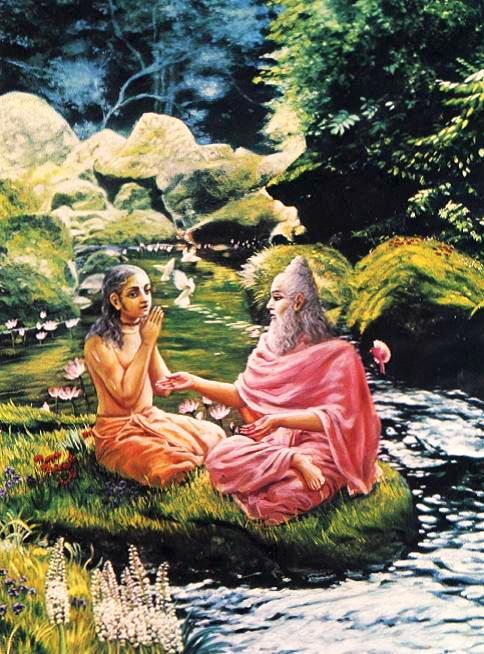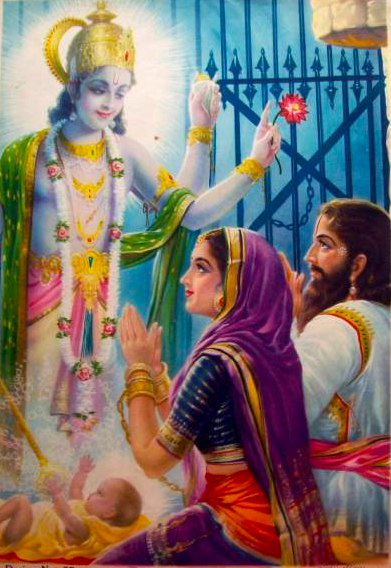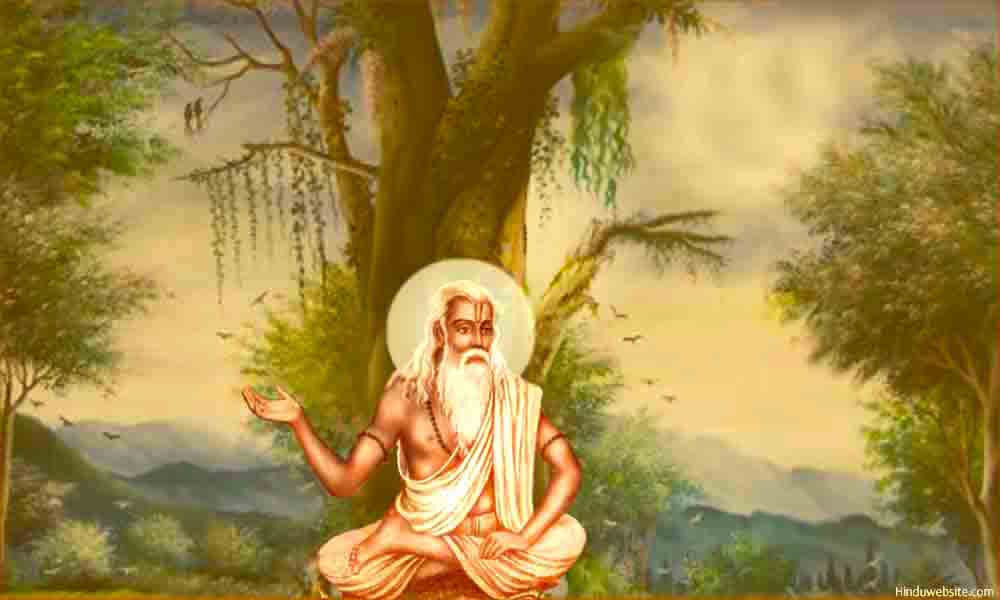Mahanidhi Madan Gopal Das
Srimad Bhagavatam is called the “king of all spiritual books” (Grantha Raja) for good reason. Within this triguna-free, transcendental treatise, the amala-purana, which showcases the absolutely selfless, divine love of Srimati Radharani, one can find all the sweet, majestic and beautiful truths about the sadhana and sadhya (daily practice and perfection) of Gaudiya Vaisnavism.
In his most compassionate and wonderful shastra, Sri Chaitanya Caritamrita, Sri Krishna Dasa Kaviraja summarizes the teachings of Sri Caitanya Mahaprabhu and the six Goswamis of Vrindavana by mentioning the same Bhagavatam verses that they used to substantiate their sublime instructions.
To emphasize the importance of these particular verses for all Gaudiya Vaisnavas, the same Bhagavatam verse is often mentioned two, three or more times in the Sri Chaitanya Caritamrta.
This series of posts presents these verses, along with selected tikas of our acharyas and the compiler. We will cover the beautiful truths, tattvas, of Krishna, Radha, Vaisnavas, Sri Guru, Bhakti Sadhana, Nama, Prema and more.
GLORIES OF SRIMAD BHAGAVATAM
* Sri Krishna is the Main Topic of Bhagavatam
janmad -yasya –yaton -vayad –itaratash, carthesh -vabhigyah –svarat
-tene -brahma –hrda -ya –adi –kavaye, -muhyanti -yat -surayah
tejo -vari-mrdam -yatha -vinimayo, -yatra -tri-sargo ’mrsha,
dhamna -svena -sada -nirasta-kuhakam, -satyam param dhimahi (Srimad Bhagavatam 1.1.1/Caitanya Caritamrita, 3 times)
“One should meditate upon the Supreme Truth, Bhagavan Sri Krishna, as the source of all manifestations. Krishna is both present in and aloof from everything in existence. Krishna is completely independent and omniscient. Krishna manifested the wisdom of Veda in the heart of Brahma, the primeval rishi. Just as sun’s rays are mistaken for water (in a mirage), Krishna deludes the greatest devatas by making the temporarily manifest material world seem real. Sri Krishna Himself, however, is forever free from all illusion because Krishna eternally exists in the divine realm.” (Srimad Bhagavatam 1.1.1)
BBT Tika of Srila Prabhupada:
“Acharyas like Sri Jiva Goswami, Sri Sanatana Goswami, Sri Visvanatha Cakravartipada and Vallabhacharya made elaborate commentaries on Bhagavatam. Serious students should go through them to better relish the transcendental messages.”
Mahanidhi Madan Gopal Das: PLEASE NOTE how in the very beginning of Bhagavatam, published in 1962, Srila Prabhupada directs his disciples to study the tikas of both the Gaudiya and Vallabha Sampradayas. Srila Prabhupada is not only appreciating other great Vaisnavas, “in print” he is ordering his disciples to study their sacred words. One may wonder if such a broad-minded, devotional attitude still prevails.
Srila Prabhupada continues: “[In his tika on this verse] Sri Visvanatha Cakravartipada explains that the very first word of the Srimad Bhagavatam “janmaady” indicates the “adi-rasa”, the madhurya-rasa (divine amorous love) found in the transcendental realm of Goloka Vrndavana. In modern civilization, amorous enjoyment is the focal point for all activities.
“However, its real and true form is only experienced in the spiritual world in the Absolute Truth. Without knowing about the actual spiritual form of amorous pleasure, everyone has accepted its material counterpart as the all in all. This Srimad Bhagavatam will gradually elevate the reader to the highest perfectional stage of transcendence.”
Mahanidhi Madan Gopal Das: Srila Prabhupada ki jai! What an amazing, straight to the point commentary by His Divine Grace! Sitting in the shade of the lotus feet of Sri Rupa and Sri Jiva Goswami in Seva Kunj, Srila Prabhupada, with the blessings of Sri Sri Radha Damodar Jiu, translated and commented on the First Canto of the Srimad Bhagavatam from 1959-1964.
Like all Gaudiya acharyas, Srila Prabhupada knows that the whole purpose of the 18,000 verse Bhagavatam is to reveal the eternal truth and glories of Srimati Radharani’s nirmal –vishuddha -vraja –prema and madhurya-rati for Rasikashekar Bhagavan Sri Krishna.
Forever we remain grateful to Srila Prabhupada for teaching us through his KRSNA BOOK, Nectar of Devotion, Teachings of Lord Chaitanya, and this opening verse of Srimad Bhagavatam that the goal of human life is to attain the “adi-rasa” (janmaady yasya), which means the eternal prema seva of the lotus feet of Sri Sri Radha-Krishna in Vrndavana.
“Jaya Radha Madhava, Kunja Bihari, Gopijanavallabha, Girivaradhari” ki jai!
Indeed, true to their beautiful rasika drshti kon, angle of vision, our Gaudiya Vaisnava acharyas show how the Bhagavatam starts off with a BANG!
Radha-Govinda Yugala’s divine madhura-rati, the “adi-rasa”, and Their eternally blissful Vraja nikunja-lilas are indicated in the very FIRST WORD OF THE BHAGAVATAM!
Out of his infinite kindness, Srila Prabhupada in his very first commentary on the Bhagavatam has revealed to the sensitive reader the real rasik essence of the Bhagavata which proclaims the supreme position of Radha-Govinda Yugala and Their uniquely blissful “adi-rasa” in Vraja Dhama!
Srimad Bhagavatam ki jai! Adi-rasa ki jai! Jai Jai Sri Radhe!

